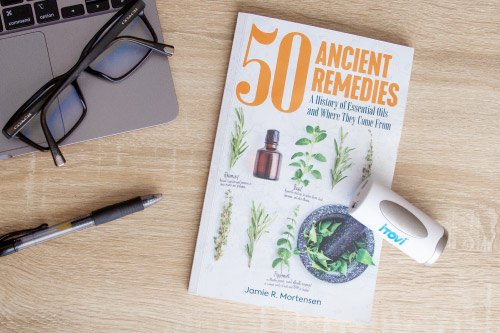
What is cardio? Cardio is one of the main two types of exercise (the other being strength training which we will cover in Part 4).
Cardio (or aerobic exercise) is basically any kind of exercise that gets your heart rate up. (How high up? At least 50% of your max heart rate. Don’t worry, we’ll cover the specifics later.) So what counts as cardio exercise can range widely—from light yoga, to a brisk walk, to sprinting the 100-yard dash, dancing, swimming, stair-master climbing, a hike, a team sport, or even the strain of certain household chores!
As long as you get your heart rate UP enough for long enough and often enough, it counts.
Not that cardio just benefits your heart!
Doing cardio can help improve your daily energy levels and sleep, regulate your appetite, burn fat and help you manage your weight, reduce overall stress, increase creativity and brain health, build and maintain muscle and bone density, help balance your nervous system and hormones, cleanse and exercise your respiratory system, and much more!
As we’ve stated earlier, for beginners, it helps to start by getting 20 minutes of activity in 3 days a week (and making the activity something that you intrinsically enjoy) so you can get in the habit of devoting time to exercise.
If you’ve got that habit down and want to expand to a full exercise plan, keep reading!
How much cardio do I need?
The first thing you’ll need to do is set your goals. For starters, how much cardio exercise will you get in each week?
The American Heart Association recommends 150 minutes of moderate-intensity aerobic exercise every week for all adults OR 75 minutes of vigorous aerobic exercise every week.
So, basically (to fulfill the AHA’s recommendation), your options are as follows:
| # of days a week spent exercising →
Exercise intensity |
1 day | 2 days | 3 days* | 4 days | 5 days* | 6 days | 7 days |
| Moderate | 150 min. | 75 min. | 50 min. | 37 min. | 30 min. | 25 min. | 21 min. |
| OR | |||||||
| Vigorous | 75 min. | 37 min. | 25 min. | 18 min. | 15 min. | 12 min. | 11 min. |
*preferred by the author
You can, of course, be irregular—for example you might:
- do 60 minutes of moderate-intensity exercise on one day and 30 minutes on three other days
OR
- Do 40 minutes of vigorous exercise on one day and 40 minutes of moderate-intensity exercise on two other days
If you are a beginner, if you struggle with motivation, and/or if you are someone who thrives off of routine, we recommend being strictly regular—to always aim for (roughly) the same intensity for the same amount of time at the same time of day & week each time, in the same place, etc.
However, if you don’t struggle as much with motivation and are someone who thrives more off of variety and adaptation (more about this later)…then feel free to try a more irregular format. Just be sure to outline your overall goals clearly from the start and be accountable for them!
Heart Monitoring
How do I Know if I Am Doing Moderate or Vigorous Cardio?
You may trust yourself to gauge the intensity of your workouts. But if you don’t, or you just prefer to be precise about these things, then you will need to monitor your heart rate as you exercise.
How do I Monitor my Heart Rate?
The easiest way(s) to monitor your heart rate is through
- A fitness-tracking wearable, usually a fitness watch or a chest strap
- The heart-rate readout on the “dashboard” of your gym’s exercise equipment
Or you can always do it the old-fashioned way by placing two fingers on the pulse point at your neck or wrist and counting the beats per minute.
What Heart Rate Should I Be Aiming For?
That depends on your fitness level and age. To know what heart rate to reach for and maintain, here’s a handy table!
| Age (years) | 20 | 25 | 30 | 35 | 40 | 45 | 50 | 55 | 60 | 65 | 70 | 75 |
| 100 %Max Heart Rate
(bpm) |
200 | 195 | 190 | 185 | 180 | 175 | 170 | 165 | 160 | 155 | 150 | 145 |
| Moderate (50-70%)
(bpm) |
100-
140 |
96-
137 |
95-
133 |
93-
130 |
90-
126 |
86-
123 |
85-
119 |
83-
116 |
80-
112 |
78-
109 |
75-
105 |
73-
102 |
| Vigorous (70-85%)
(bpm) |
140-
170 |
137-
166 |
133-
162 |
130-
157 |
126-
153 |
123-
149 |
119-
145 |
116-
140 |
112-
136 |
109-
132 |
105-
128 |
102-
123 |
Is it OK if I go over 85% of my max heart rate?
Possibly.
If you find you can exercise at a heart rate over 85% of your max without significant discomfort, feel free to do so! Just make sure to watch yourself for a day to make sure you don’t overstrain (see section below on how to recognize symptoms of overstraining).
Note that it is generally recommended that you exercise at a particular intensity for six weeks before changing your exercise plan to accommodate more intensity.
Find yourself “wimping out”?
Some days you won’t have as much energy and will be tempted to cut your exercise session short. Here are two crucial things to remember:
- You DON’T have to push yourself to your 100% capacity. In fact, you shouldn’t! Going at it 100% all the time often results in overstraining and injury. So ease up—but keep going! Moderate or light exercise is better than no exercise at all.
- Always go for at least 20 minutes. After those first 20 minutes, your body should start to adjust to the strain and the exercise will be easier. And even if all you do is 20 minutes, that can make a big difference compared to doing nothing.
Remember, exercise is more about connecting to your body through movement and listening to it for when to push harder, rather than just exerting yourself for exertion’s sake.
Warm-Ups
Why Warm Up?
Warm-ups serve several purposes. They can help you:
- Remember to prioritize connecting to your body and the intrinsic enjoyment of your exercise
- Ease into your exercise session so you don’t get overwhelmed and quit early/avoid exercise altogether
- Avoid injury
- Maximize your performance, especially if you are looking to break some personal records this session.
How do I Warm Up?
Warm-ups usually last 5-10 minutes. But we recommend warming up—connecting to your body and energizing yourself through light movement—until you feel that natural inclination to kick it up a notch.
Your warm-up should consist of:
- Light movement
- Deep breathing
- Stretches (especially stretches that mirror the movements that you plan to do in your exercise session)
- Make sure to stay hydrated
Feel free to use your favorite energizing and warming essential oils to get you started! Orange, peppermint, grapefruit, cinnamon, clove, and ginger are popular for exercise warm-ups.
Cool Down
If you want the best results from your exercise, you mustn’t neglect your exercise recovery! And recovery starts with your cool-down. Cooling down helps
- Reduce soreness
- Maximize muscle growth
- Increase flexibility (which improves your future exercise performance)
- Increases the stress-reduction benefits of exercise
Your cool-down should look a lot like your warm-up, except you should be doing it with the intent of gradually reducing your heart rate and bodily activity level, instead of gradually raising it.
Throw in an extra tablespoon of mindfulness and maybe some massage in there for best results. (Feel free to use peppermint, wintergreen, marjoram, or rosemary oil in your massage). Bonus points if you can use a change in temperature (sauna, ice packs, etc) to relax your body. And don’t forget to hydrate, eat, and rest well after your exercise session!
End-of-Exercise affirmation: I am proud of myself. It was a pleasure to connect to my body.
Variety & Experimentation
Regular cardio should be non-negotiable when it comes to your wellness. Never let too many days go by without making your heart beat fast!
But it doesn’t always have to be the same cardio.
There is a greater depth of personal exercise satisfaction waiting for those who know how to attune to their body and exercise according to what it is telling them on any given day.
Acquaint yourself with a range of different cardio formats (jogging, swimming, sports, biking, aerobic exercise videos, etc). And, on the days that you’re not trying something new, ask yourself (preferably as you warm up) which kind of cardio exertion you feel an attraction to today.
We never want to lose that sense of intrinsically enjoying our exercise! So, as long as it isn’t doing “TV remote-lifts” on the couch, feel free to do whatever kind of cardio you want!
Exceptions may include 1) those who struggle with motivation and benefit most from a predictable routine and 2) those who are training for a specific exercise feat/milestone—if your goal is to run a 5k, it’s probably best to focus your cardio workouts accordingly.
Want to let your iTOVi Scan help you choose a workout? See the tables at the bottom of this post! (Also, for ladies, check out our cycle-syncing exercise recommendations.)
Success Metrics
The first metric you should care about is consistency. Without consistency, none of the other metrics will matter too much for too long.
Once you’ve got your cardio habit down though, you might consider setting some new fitness goals with one or more of the following metrics:
- How energized, connected, and free from stress are you typically feeling (during and outside of your exercise sessions)\
- Body Mass Index
- V02 Max
- Distance/Time (i.e. bring your 10-minute mile down to 9 minutes)
- Intensity/Time (i.e. hold a difficult speed or stretch for longer)
- Etc.
When you make any metric your goal, be sure to write down
- Your baseline (where you’re at now)
- Where you want to get to
- Track your progress by re-measuring where you are at intervals as you go forward (see yourself get closer to your goal!)
Social Factor
No man is an island. And while you certainly can opt to exercise by yourself, you should know what benefits can come from exercising with others!
Whether simply exercise where other people are present, do the same kind of exercise as those around you, exercise in synchrony, OR exercise in some kind of team, exercising with others may:
- Increase your motivation
- Increase the amount of energy you feel
- Increase the intrinsic enjoyment of your exercise
- Improve your performance
- Provide you with helpful instruction and support
That said, there are those who quickly grow more fatigued, less motivated, and perform less well when around people. Or perhaps, while you enjoy your exercise more with friends but find it more difficult around strangers.
Look to yourself to know if, and if so, how social dynamics can affect your exercise endeavors.
Beware Overstrain
Overstraining will sabotage your exercise results—so don’t do it!
As you exercise and after you exercise, watch yourself for signs of overstraining, such as:
- Frequent or recurring injuries
- Excessive fatigue
- Excessive soreness
- Irritability
- Chest Pain (especially for cardio)
- Rise in resting heartbeat
If you notice any of these signs it may be time to pull back on the intensity or amount of time you spend exercising. You may also need to balance your exercise routine (don’t go too hard in one area and neglect the others). Also, be sure to adequately warm up and recover thoroughly (see above).
| Class Ideas |
|
Cardio Recommendations by iTOVi Scan Category
Body System Categories
| Brain | Tai-chi
Aerobic Exercise (jogging, cycling, swimming, etc) |
| Cardiovascular
Respiratory Skin & Hair |
Deep Breathing Exercises
Aerobic Exercise (jogging, cycling, swimming, etc) HiiT |
| Nervous
Endocrine Structural |
Stretches
Yoga Barefoot walking Whole-Body Exercises (lunges, push-ups, squats, rowing, etc) Strength Training |
| Immune | Power-walking OR cleaning your home intensively enough to get your heart rate up |
| Urinary | Kegel Exercises
Whole-Body Exercises (lunges, push-ups, squats, rowing, etc) Strength Training |
| Digestive | Any of the above |
Emotional Categories
| Safe & Enlightenment | Secure & Inspiration | Qigong |
| Comfort & Peace | Console & Peace | Yoga (Restorative) |
| Awareness | Tai Chi | |
| Energy | Power walking | |
| Clarity | Intensive yoga | |
| Acceptance & Joy | Dance | |
| Trust | Guided Workout/New Workout | |
| Love & Empowerment | HiiT | |




